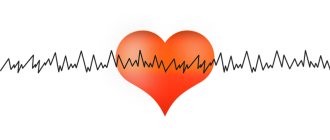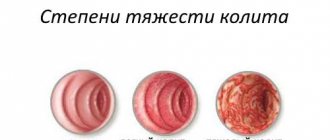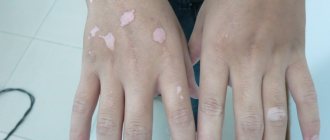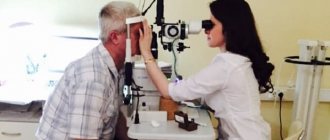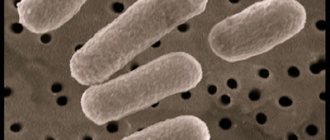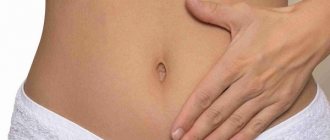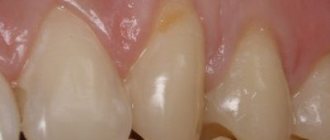Pain in the neck associated with diseases of the spinal column is referred to in medical terminology as vertebrogenic cervicalgia. According to statistics, more than half of the population of developed countries annually experience acute attacks of the disease due to the influence of various unfavorable factors. In 30% of patients, the pathological process becomes chronic and significantly worsens the quality of life.
At the first clinical manifestations of the disease, you should consult a doctor, since pain can be a manifestation of serious illnesses that require urgent medical intervention.
Causes
According to the international classification of diseases, pathology refers to diseases of the musculoskeletal system and connective tissue. This is a type of dorsopathy, which is coded as M 54.2 and relates directly to dorsalgia.
The main cause of pain in the neck area is diseases of the cervical spine. Usually, already with the manifestation of vertebral cervicalgia, patients are diagnosed with a developed degree of degenerative-dystrophic pathology. The disease is equally likely to affect both women and men. The most common cause of vertebral cervicalgia is osteochondrosis, the focus of which is located either in the cervical or thoracic region.
Among other reasons that can cause the disease, doctors note:
- The appearance of osteophytes as a result of various pathologies.
- Disc protrusion.
- Neoplasms of the cervical spine (benign or malignant).
- Spinal foramen stenosis.
- Infectious processes occurring in the cervical region.
- Intervertebral hernia.
- Spinal fracture.
- Osteoporosis, in which bone density is reduced.
- Pathologies of the carotid artery.
- Dislocation or subluxation, compression of the vertebrae.
- Rheumatoid arthritis.
- Bechterew's disease.
- Pinched nerve endings.
- Arthrosis of the facet joints.
REFERENCE! These pathologies, in most cases, are acquired. But some congenital abnormalities, for example, anomalies in the structure of the vertebrae in the cervical region, can also lead to the development of vertebrogenic cervicalgia.
The cause of cervicalgia is not only pathologies, but also the state of the body when pain occurs. In itself, it is not dangerous if the effect of the negative factor is eliminated in time. Neck pain occurs when:
Arthrosis of the back
- Hypothermia of the body.
- Frequent stress.
- Performing work that involves lifting heavy objects.
- Incorrect position of the neck at night, during sleep.
- Staying in the same position for a long time.
- Incorrect posture in a person.
- Excess body weight.
- Alcohol abuse.
- Poor nutrition, lack of water in the body.
In most cases, all these factors can be easily eliminated and neck pain can be relieved. However, if any discomfort occurs, you should first visit a doctor and not diagnose yourself - this will lead to delaying treatment of the disease.
The prevalence of vertebrogenic cervicalgia is quite wide. Almost every resident suffers from it to one degree or another, but does not know what it is and writes off neck pain as fatigue.
The appearance of pain is due to the fact that it is associated with damage to nerve endings, many of which are associated with the innervation of the cervical spine.
Therefore, even pathology in the sternum or thoracic spine can cause neck pain. All this requires a competent approach to the differential diagnosis of the disease, which has become the main cause of cervicalgia.
Diagnosis of the disease
Considering the fact that neck pain can be caused by diseases that require emergency medical care, diagnosis must be very thorough. Diagnostic measures include:
- A physical examination of the patient, based on the results of which the doctor will prescribe an adequate examination plan.
- Study of anamnesis.
- Methods of medical imaging of cervical spine structures (MRI, CT, radiography).
- Lab tests.
When studying the medical history, the doctor finds out under what circumstances the painful sensations first arose. They can be directly related to the patient’s professional activity and caused by prolonged forced stay in a non-physiological position (for example, work as a dentist, driver), appear in the morning, after carrying heavy loads or hypothermia.
Only based on these data can an accurate diagnosis be established and treatment tactics determined, which will depend on the genesis of cervicalgia.
Classification
Vertebrogenic cervicalgia is classified according to several criteria. Depending on the occurrence of the pathological process, vertebral cervicalgia and discogenic cervicalgia are distinguished.
Pinching of a blood vessel supplying the brain is a manifestation of cervicocranialgia.
Vertebral cervicalgia has a second name, spondylogenic, which clearly indicates the location of the origin of the pain syndrome. In this case, negative sensations in the neck area are caused by altered bone tissue, which irritates the nerve endings and causes pain. As a result, patients suffer from severe muscular-tonic syndrome and other manifestations of pathologies.
The reason for this manifestation can also be pathological processes in the muscles themselves, which is provoked by infections. Patients, along with vertebrogenic vertebral cervicalgia, are diagnosed with osteoporosis, previous traumatic injuries, as well as neoplasms in the cervical spine.
Discogenic cervicalgia is a consequence of a violation of the integrity of the intervertebral discs. Here, disc pathologies play a key role, causing changes in the height of the cartilage between the cervical vertebrae. In turn, their elasticity is lost, and this leads to pinching of the neurovascular bundle.
According to the nature of the course of the disease, acute and chronic vertebral cervicalgia are traditionally distinguished. The acute form of the disease is pronounced, and the symptoms cannot be ignored. The pain syndrome is very intense, and accompanying symptoms are also clearly expressed. Usually this situation is a consequence of injury or an exacerbation of dorsopathy. The acute form lasts on average about ten days.
The chronic form of the disease is marked by its constant presence in a person. The pain may be stronger or weaker. Usually, the chronic nature of cervicalgia syndrome is indicated if the pain persists for about three months.
IMPORTANT! The trigger may be growing tumors, an untreated infection or a mild inflammatory process, osteoporosis.
Depending on where the pain is predominantly felt, cervicalgia is divided into:
- Cervicocranialgia.
- Cervicobrachialgia.
- Cervicothoracolumbalgia.
- Cervicothoracalgia.
Cervicocranialgia is a form of pathology in which the blood vessels of the brain are significantly affected. This threatens, and sometimes already is, a manifestation of cerebral circulatory disorders, so such patients are subject to special monitoring.
Cervicobrachialgia affects the vessels of the upper extremities of the human body. As a result, a disorder of the innervation of the limbs occurs, and motor abilities suffer. Patients may experience paresis of the upper extremities and spontaneous stabbing pain in the upper arm and hand. Painful cramps appear.
Symptoms
Based on the name of this pathological condition, it becomes clear that the main clinical manifestation is pain, the severity and nature of the manifestation of which will completely depend on the etiological factor.
In almost all situations, pain is accompanied by a large number of symptoms, but the most common is cervicalgia with pronounced muscular-tonic syndrome. In such cases, the muscles of the cervical spine become flattened and thickened, and during palpation their tension and increased pain are noted.
In addition, among other external manifestations it is also worth highlighting:
- impaired neck mobility - the patient is forced to bend over to look to the side;
- the appearance of a specific crunch even with the slightest movements of the head;
- attacks of headaches and dizziness;
- spread of pain to one of the upper limbs and the shoulder girdle;
- decreased hearing and visual acuity;
- fainting that occurs after tilting the head back;
- change in gait - it becomes shaky and unstable;
- numbness and tingling of the skin in the face, neck and hands;
- nausea that does not lead to vomiting;
- weakness of the upper limbs;
- worsening pain when sneezing or coughing.
Pain in vertebrogenic cervicocranialgia can be bilateral
It is advisable to apply all of the above symptoms to any person, regardless of age and gender.
If vertebrogenic cervicalgia is a consequence of one of the above diseases, then it must be taken into account that the main clinical picture will be accompanied by characteristic signs of the underlying disease.
Symptoms
Vertebrogenic cervicalgia has a characteristic set of symptoms, but they can hardly be called specific, indicating a specific cause of pain. Therefore, when diagnosing, it is important for doctors to identify as many complaints as possible from patients in order to form an idea of the pathology.
Severe pain in the neck is the main symptom of vertebral cervicalgia.
In most cases, people who go to the doctor complain about:
- Pain in the neck is the main symptom of cervicalgia.
- Referring pain not only to the neck, but also to the arm, back, under the shoulder blades, back of the head, and lower back.
- Severe muscular-tonic syndrome (thickness, stiffness and soreness in the muscles), which manifests itself in almost all patients.
- Problems with motor activity in the neck - often patients cannot turn their neck as much as possible due to pain, and sometimes any turning to the side is accompanied by pain. The appearance of a crunch when moving the neck.
- Migraine attacks, dizziness.
- Visual disturbances, tinnitus.
- In severe cases, fainting may occur.
- The appearance of an unsteady gait.
- Unpleasant feelings of numbness and tingling in the face, behind the ears, in the back of the head.
- The appearance of attacks of nausea.
- Weakness in the arms.
- Increased pain in the neck when sneezing, tilting the head, or turning sharply.
IMPORTANT! Such symptoms are typical for people regardless of gender and age. However, the appearance of these symptoms is not limited - usually other signs are added that indicate a specific pathology that provoked cervicalgia.
Frequently asked questions ↑
Is massage beneficial?
Of course, for cervicalgia, physiotherapy is very useful, in particular, thermal procedures, compresses and mud baths, and it is also necessary to monitor correct posture.
Massage can be started only after the pain begins to go away, that is, in the subacute stage.
What ointments help?
Ointments intended for the treatment of osteochondrosis will help relieve pain:
- From the group of non-steroidal anti-inflammatory drugs with the active ingredient ketoprofen, for example, Ketonal , Fastum Gel , etc.;
- Anesthetic ointments containing local irritants - Finalgon , Capsicam and others. They do not have a therapeutic effect, but they dull the pain syndrome;
- Complex action ointments consisting of several components, for example, Dolobene Gel .
Read also…. Neck and arm pain
All these ointments have only a symptomatic effect, but they are useless in terms of cure.
Does hirudotherapy help?
Yes, to some extent, treatment with leeches has a positive effect on the spine. You should start by consulting your doctor, who will make a decision taking into account the presence of concomitant diseases.
We can talk about hirudotherapy only in cases of moderate pain, and first it is necessary to perform spinal traction.
Diagnostics
Since diagnosing the cause of vertebrogenic cervicalgia is quite complex, various methods are used to identify the characteristics of the course of the disease. After collecting data and comprehensive analysis, doctors make a diagnosis. Among the diagnostic methods used:
- X-ray is a basic method that will help determine the most common abnormalities of the musculoskeletal system. The image will show joints damaged as a result of injury, deformities, and age-related changes. Already based on the results of the x-ray, it is possible to judge with a high probability the root cause of cervicalgia.
- Magnetic resonance imaging - makes it possible to obtain the most complete picture not only of bone structures, but also allows you to see soft tissues, blood vessels, nerve endings, and examine intervertebral discs in more detail. Hernial protrusion and neoplasms of various kinds are best diagnosed using MRI.
- Computed tomography is performed if there are contraindications to MRI, since computer examination uses harmful x-rays.
- Electromyelography is an important study that can provide information about the speed of nerve impulse transmission. A study is carried out when paresis of the upper limbs occurs.
If manifestations of vertebrogenic cervicalgia occur, it is best to consult a doctor in the first three days after the onset of symptoms - then they are most pronounced and it is easiest to diagnose the pathology. Subsequently, the symptoms subside, and by the end of the first week they may be completely absent, which leads to incorrect conclusions about recovery.
Diagnosis of the disease
In the international classification of diseases, cervicalgia is assigned the ICD 10 code M54.2. If discogenic cervicalgia is diagnosed, it belongs to group M50.0-ze5.
To make an accurate diagnosis, you need to visit a therapist and a neurologist and conduct the following types of research:
- radiography;
- computed tomography (CT);
- magnetic resonance imaging (MRI);
- myelography.
Instrumental types of diagnostics make it possible to find out the nature of pain, the localization of the pathological process, the degree of severity, and the specifics of destructive changes in the spine.
In case of cerebrovascular accident and signs of ischemia, cerebral vessels, hearing and visual acuity, and neurological reflexes are examined.
Treatment
In the treatment of the disease, pain relief comes first. This can also be done in a conservative way, if the disease has not become severe. Before you begin treatment of the pathology, you need to remove the load from the spinal column.
Manual therapy is a great way to relieve neck pain.
This is achieved by using various groups of drugs:
- Glucocorticoids.
- Muscle relaxants.
- Non-steroidal anti-inflammatory drugs.
- Means for improving blood flow in the cervical spine area.
- Chondroprotectors.
- Vitamins.
In addition to medications, physiotherapeutic procedures will help to cope with pain. Patients are prescribed magnetic therapy, acupuncture, phonophoresis and electrophoresis, and heating. Additionally, during the recovery stage, treatment is carried out with massage, especially water massage, and spinal traction for intervertebral hernias.
If necessary, patients are prescribed to wear a cervical collar - this is an effective method of immobilization to relieve pain. Patients can wear this collar for up to three weeks. In case of severe pain, novocaine blockades are performed.
REFERENCE! Surgical methods for solving vertebrogenic cervicalgia are used if there is dissection of the carotid artery, pinching of the spinal cord in the cervical region, and muscle weakness progresses.
Surgical techniques in the treatment of cervicalgia are:
- Laminectomy is a surgical procedure in which a small amount of vertebral bone is removed to relieve compression of the nerve root. And a small part of the intervertebral disc is also removed. The operation helps reduce pain in the neck area and activate tissue trophism.
- Discectomy is the complete removal of the disc if other treatment options are not possible. After surgery, it is possible to strengthen the cervical vertebrae with special structures.
- Decompression of the spinal canal is carried out in various ways depending on what exactly caused the compression. The operation is widely used for stenosis; spinous processes, yellow ligaments, tumors, and hematomas can be removed.
- Foraminotomy – removal of osteophyte, which was formed as a result of osteochondrosis. If the cause of vertebrogenic cervicalgia was precisely an osteophyte that compresses the nerve endings, then its removal eliminates the pain, but osteochondrosis itself requires further therapy, otherwise relapses will occur.
Prevention of the disease
To prevent its occurrence, doctors recommend following simple rules in everyday life. They should especially be followed by people suffering from chronic cervicalgia, otherwise exacerbations of the syndrome cannot be avoided. Necessary:
- Every day after sleep, sitting on the bed, develop the neck muscles, bending and turning the head to the sides;
- Be sure to include exercises that strengthen your back muscles in your morning exercise routine;
- When performing sedentary work while driving, do short-term warm-ups of the cervical spine every hour;
- constantly monitor your posture so that you can walk and sit without hunching;
- sleep using orthopedic pillows and mattresses;
- protect the spine from injuries when playing sports, at work, at home;
- avoid hypothermia of the body due to air conditioners and drafts;
- do not lift excessive weights;
- install the computer monitor at eye level to eliminate both excessive lifting and tilting of the head;
- when reading, use a stand so that the texts are at eye level;
- walk at least 3–5 km daily;
- practice active recreation, especially swimming, jogging;
- follow the principles of a balanced diet.
Although the prognosis for treatment of cervicalgia in most cases is favorable - doctors most often manage to restore the health of patients, it is still better not to allow the condition of the spine to develop into such a pathology. At the first sensation of pain in the cervical spine, you should immediately contact a neurologist.
Prevention
Prevention plays a leading role in preventing the development of vertebrogenic cervicalgia. Unfortunately, even preventive methods do not always cope with their task, since the occurrence of pain in the neck area is influenced by a large number of factors. To prevent the development of cervicalgia, doctors recommend:
- Lead an active lifestyle, avoid physical inactivity.
- Quit alcohol and smoking.
- Form correct posture from childhood.
- Eat a balanced diet and consume enough calcium.
- Control body weight.
- Avoid hypothermia and always wear a scarf in cold windy weather.
- Undergo preventive examinations in a timely manner.
- Treat all infectious diseases that can cause hematogenous spread of infection.
- When working sedentarily, find time for neck exercises.
Conservative and surgical treatment of cervicalgia
Once the cause of cervicalgia has been identified, treatment can begin, which is often carried out using a conservative method.
- This is a repeatedly cited standard treatment regimen for vertebrogenic pain in the acute period: Use of NSAIDs (non-steroidal) and CPVC (corticosteroid) anti-inflammatory drugs. We must not forget about the great harm, especially for the gastrointestinal tract, of such treatment, so you need to avoid a long course, use protectors and take into account all individual contraindications
- Medicines to relax muscle spasms (muscle relaxants)
- Carrying out local anesthesia in case of severe pain, in the form of blockade injections with drugs of the novocaine group
- However, such a procedure should be carried out with extreme caution, especially with cervical hernias.
- An illiterate or inexperienced therapist cannot be trusted with more than just your neck.
Therapeutic exercise is the best way to treat degenerative forms of cervical dorsopathy, since exercises help reduce pressure on the discs and eliminate cervicalgia
- For cervicago, static exercises are recommended - post-isometric relaxation
- Mud therapy
Surgical treatment is recommended in exceptional cases:
- For injuries, compression or tumors of the spinal cord
- For central paresis associated with sensory disturbances and dysfunction of the pelvic organs
- With increasing paresis and threat of necrosis of the spinal nerve
The most important
Vertebral cervicalgia is a common neck pain syndrome associated with problems of the musculoskeletal system in the cervical area. The condition can occur in acute and chronic stages, pain radiates to the shoulder blade, back, upper limbs, and lower back. Symptoms are nonspecific and therefore require competent differential diagnosis.
Treatment is predominantly conservative. It is aimed at treating the underlying disease, after which the patient’s condition improves. In some cases, surgery is indicated.
What's happening?
As the disease develops in the cervical spine, the nucleus pulposus of the intervertebral disc loses its elasticity and gradually disintegrates into separate fragments.
Fragments of the nucleus, with physical stress and movements of the spine, put pressure on the fibrous ring, which contains sensory receptors. In this case, the elements of the intervertebral disc begin to partially protrude into the spinal canal and put pressure on the spinal cord and the nerve roots extending from the spinal cord, which go to the upper shoulder girdle.
Irritation of receptors and nerves in the reflected area (segment) of the spine causes pain, reflex reactions and tonic tension in the muscles of the cervical and cervicothoracic region. The pain is referred in nature and quite often radiates to the scapula, interscapular region and shoulder girdle.
Types of cervicalgia
Since the disease is associated with such a large set of factors, a classification of its varieties has been developed:
- Vertebrogenic – i.e. the disease is associated specifically with various lesions of bone tissue (arthrosis, arthritis, osteoporosis, spondylosis).
- Nonvertebrogenic, which is associated with various injuries to the neck muscles and other factors that are not related to the cervical vertebrae themselves. These can be sprains, as well as inflammatory processes, disorders resulting from thrombosis (blood thickening with the formation of blood clots); in rare cases, it is associated with subarachnoid hemorrhage (into the lining of the brain), an abscess.
Treatment of vertebrogenic cervicalgia at home
By prescription and with the consent of the doctor, in some cases it is possible to speed up the healing process. Treatment at home depends on the type of disease. In the case of the vertebrogenic form, several simple methods are used.
Massage with a warm bottle
Warm water is filled into a regular plastic bottle (based on the comfortable feeling of your neck). You need to fill it to the top so that the surface is elastic. Lie with your back on a hard surface (the floor or a hard mattress) and place the bottle under your neck. They roll it smoothly, moving the neck in different directions. The procedure should be carried out in the most relaxed state. This method improves blood circulation and is especially effective as a pain reliever.
A set of therapeutic exercises
All exercises are repeated 5-7 times, and it is important to focus on your own sensations - they should be comfortable.
- Lying on your back, turn your head to the right and left and hold it in this position for 5 seconds.
- Lying on your back, grab the back of your head with your hands and lift only your neck with them.
- In a sitting position, pull the head forward, applying effort only with the neck muscles.
- Lying on your side on a small elastic pillow, take a deep breath, hold your breath for 10 seconds and press your neck on the pillow, then exhale. Then do the same on the other side.
- In a sitting position, clasp your head with your right hand (the back of your head) and tilt it as far as possible towards your right shoulder. Then do the same on the left side.
Treatment of spondylogenic cervicalgia at home
In this case, therapeutic exercises can also be used, but special attention is paid to traditional methods of warming the neck using compresses and rubbing.
Warming compresses
In these cases, mustard plasters are used, compresses made from bile, which is sold at the pharmacy, as well as horseradish or garlic (can be mixed with honey). In all cases, the medicine is spread in a large layer and kept for no more than 2 hours, but on the other hand, overheating should not be allowed, remembering that the skin of the neck is very delicate.
Rubbing
Rubbing is carried out with the palms of the hands.
There are several options for this:
- vodka;
- herbal tinctures with alcohol (horseradish, red pepper, larkspur, cinquefoil);
- "Star";
- a solution of equal amounts of honey and alcohol;
- pine oil: pine cones are simmered in vegetable oil in the oven until the mixture turns red; used for rubbing and compresses only in a warm, slightly heated form.
It is important to understand that cervicalgia is a pathology that develops over a very long time, so it is quite possible to recognize it and begin to treat it at the earliest stages. If you see a doctor on time, the chance of recovery is almost guaranteed.
How to diagnose the disease
Effective treatment of cervicalgia is only possible if the correct diagnosis has been made. The first thing the doctor should do is collect the patient’s complaints and ask about the symptoms. He always clarifies the nature of the pain syndrome and how it first appeared. Discomfort may be associated with sleeping in an uncomfortable position or the forced position of the body that a person takes at work. Muscular-nervous pain can be caused by hypothermia, carrying heavy objects, or intense training. After an oral conversation and an external examination, the doctor prescribes examinations for the patient to establish an accurate diagnosis. These include:
- radiography in normal projection and with functional tests;
- CT scan;
- Magnetic resonance imaging;
- functional diagnostics (EMG);
- myelography and others.
Acupuncture
Treatment depends on the root cause of pain identified during diagnosis. If the problem arose against the background of osteochondrosis, certain measures are required; if it appeared against the background of hypothermia or injury, completely different measures are required.
How to get rid of pathology
In most cases, treatment of cervicalgia is quick and effective. The situation is more complicated if the pain syndrome is advanced. It manifests itself weaker, but constantly makes itself felt. In this case, long-term therapy is required, after which the disease still reminds itself from time to time with relapses. Vertebrogenic cervicalgia most often involves conservative treatment. It is important to understand that the doctor is dealing not only with muscle-nerve pain, but also with the disease that causes these unpleasant symptoms. Therefore, therapy in different cases may differ significantly. Some of its common features can be identified:
- Taking painkillers, which are most often non-steroidal anti-inflammatory drugs. They fight pain, relieve swelling and inflammation. Treatment with them should not last more than two weeks, otherwise there is a high risk of complications.
- Muscle relaxants – are prescribed for pain of a muscular-nervous nature associated with the occurrence of spasms and “trigger points”.
- Special neck collar that limits movement. It is necessary for the muscles to be at rest. Treatment with this method lasts from 1 to 3 weeks. The collar is selected individually, taking into account the characteristics of the course of the disease and the patient’s anatomy.
- Physiotherapy procedures (ozokerite, magnetic therapy, galvanic currents) - increase blood circulation in the cervical region, normalize metabolism, and reduce pain.
- Manual therapy, massage, acupuncture.
- Physiotherapy exercises are prescribed after the discomfort has subsided. The set of exercises is selected individually and should be performed 3-4 times a week.
In some cases, novocaine and lidocaine blockades and hormonal agents are used to combat severe pain. To eliminate increased excitability of the nervous system, the patient is prescribed antidepressants. If conservative therapy does not produce results, the patient is indicated for surgical treatment. Any surgical intervention in the cervical spine is risky due to the high concentration of blood vessels and nerve endings in it. For this reason, the decision to undergo surgery must be weighed. Surgical intervention is indicated in cases where acute damage to the spinal cord is detected in the cervical region or if there is paresis of the upper limbs and the risk of tissue death.
Treatment options
Drug therapy includes the prescription of drugs:
- Analgesics for pain relief (tempalgin, spasmolgon and others);
- Non-steroidal anti-inflammatory drugs for pain relief and reduction of inflammation (diclofenac, ibuprofen, nimesulide, nimesil and others);
- Drugs to improve hemodynamics (trental, vasonite, pentoxifylline, radomin and others);
- Muscle relaxants to relieve muscle tension (midakalm, sirdalud, baclofen and others);
- Venotonics to improve venous outflow (detralex, vasoket, diosmin, phlebodia and others);
- Diuretics to remove excess moisture and relieve swelling (mannitol, furosemide, veroshpiron and others);
- For chronic cases, antidepressants (gedazepam, venlafaxine) are prescribed;
- For severe pain, lidocaine is used for parabertebral blockades. Pain relieving patches are also used
- Vitamin therapy.
Traditional methods of treatment:
- Saunas, baths;
- Compresses with mustard;
- Rubbing with sea salt;
- Hirudotherapy;
- Neck lotions with pepper. Grind hot peppers and add vodka in a ratio of 1:10. Leave for at least three hours in a dark place. Dampen a napkin and place it on your neck for 10 minutes. It is recommended to carry out the procedure 3 times a day.
- Rubbing the painful area with barberry root tincture. Under massage movements and this tincture, the pain is dulled;
- Horseradish leaves also have an analgesic effect if you pour boiling water over them and dry them. It is recommended to apply them to painful areas of the neck;
- Coltsfoot and celery root are also effective in treatment. They should be poured with boiling water and left for 24 hours. Strain and drink one teaspoon before meals. And you can also lubricate your neck with a tincture of coltsfoot alcohol;
- Compresses made from propolis, aloe juice and mustard powder infused with vodka or alcohol and water.
Special therapeutic exercises:
- Therapeutic exercises are needed to relieve muscle tension, normalize their tone and properly distribute the load, as well as to easily endure the acute period of the disease and recovery during the period of remission. It is recommended to visit gyms and swimming pools under the supervision of specialists and after consulting a doctor.
Effective exercises:
- Breathing exercises. Take a lying position on a flat surface on your back, put one hand on your stomach, the other on your chest. Next, you should slowly inhale and exhale. The exercise should be performed 10 times and subsequent increase in repetitions.
- Take a lying position on a flat surface on your stomach, rise on your hands (at the same time, watch your head and spine and their position) and raise your head up.
- Take a lying position on your stomach, raise your arms up and turn your head in different directions 10 times, then lower your arms along your body and repeat the head movements.
- In a sitting position, as you inhale, slowly tilt your head back, and as you exhale, press your chin to your chest. Repeat the exercise 5 times.
- Also, in a sitting position, perform very slowly circular movements of the head, while monitoring your breathing.
- When swimming, change positions from your stomach to your back to avoid overstraining your neck muscles.
- In a sitting position, throw your arms behind your head, while bending back. Next, extend your arms in front of you and press your head to your chest. All exercises are recommended to be done every day, even during an exacerbation, because they are designed for low physical activity and will not cause harm, but on the contrary will help recovery and pain relief. Regular dosed physical activity helps prevent exacerbation and lead to a reduction in pain.
Physiotherapy:
- Manual therapy;
- Massage using pain-relieving ointments;
- Thermal procedures;
- Amplipulse, electrophoresis;
- Magnetotherapy;
- Ultraviolet irradiation;
- Shock wave therapy;
- Mud therapy;
- Electroacupuncture;
- Balneotherapy;
- Iodine-bromine, sulfide, radon baths;
- Diadynamic therapy;
- Reflexology (acupuncture and others).
Other treatment methods that promote proper head posture to improve blood circulation and relieve pain in the head and neck:
- Spinal traction;
- Neck corset;
- Shantsa tire;
- Surgery.

